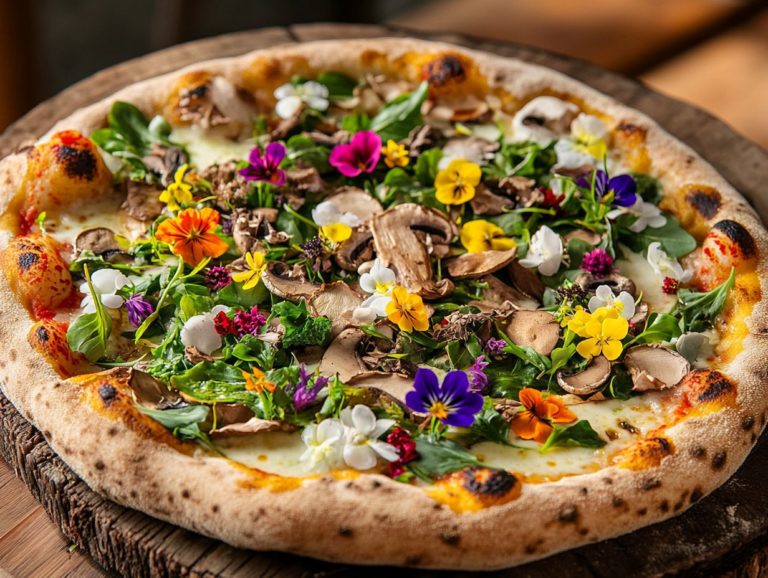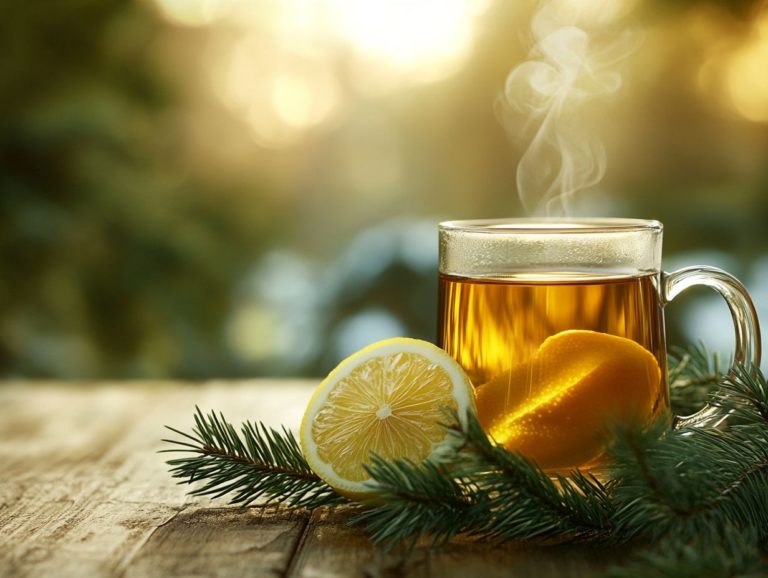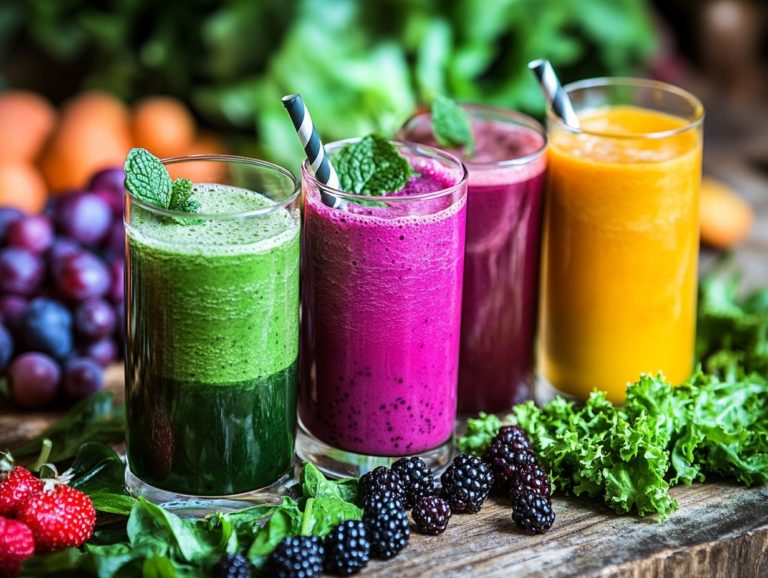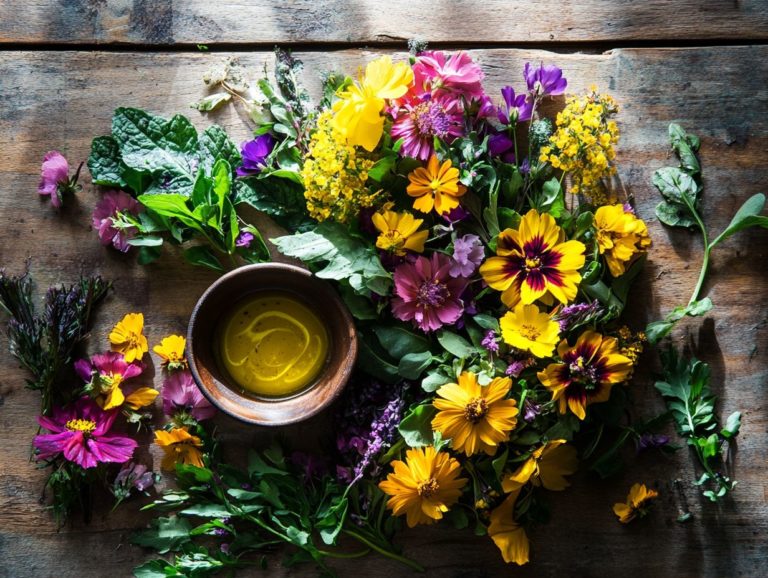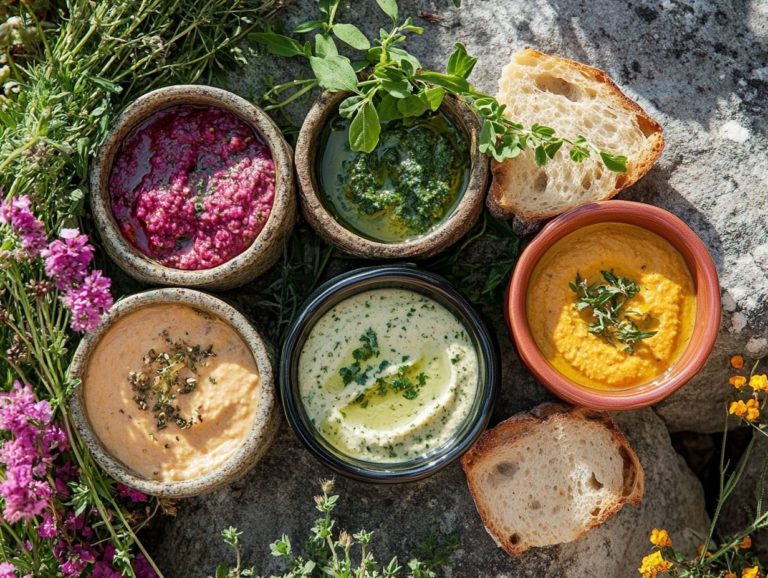Crafting Wild Edible Custards and Puddings
Get ready to dive into the exquisite flavors nature has to offer your taste buds will thank you! Immerse yourself in the delightful world of wild edible custards and puddings, where the bounty of nature beautifully intertwines with culinary creativity.
This article invites you to explore the nutritional benefits of wild edibles, offering exciting tips that will transform your desserts. You’ll also discover enticing recipes designed to inspire your culinary adventures in the kitchen.
Whether you re an experienced forager or simply curious about introducing more wild ingredients into your desserts, you ll find valuable information and ideas to elevate your sweet creations.
Prepare to indulge in the exquisite flavors that nature has to offer!
Contents
- Key Takeaways:
- Benefits of Incorporating Wild Edibles
- Common Wild Edibles Used in Custards and Puddings
- Recipes for Wild Edible Custards and Puddings
- Tips for Creating Delicious and Safe Wild Edible Desserts
- Frequently Asked Questions
- 1. What are some wild ingredients that can be used in crafting edible custards and puddings, particularly for seasonal recipes?
- 2. Are there any safety precautions when using wild ingredients in custards and puddings?
- 3. How do I incorporate wild ingredients into my custard or pudding recipe?
- 4. Can I substitute wild ingredients for traditional ingredients in custard and pudding recipes?
- 5. Are there specific tools or equipment needed for crafting wild edible custards and puddings?
- 6. Are there unique health benefits to using wild ingredients in custards and puddings?
Key Takeaways:
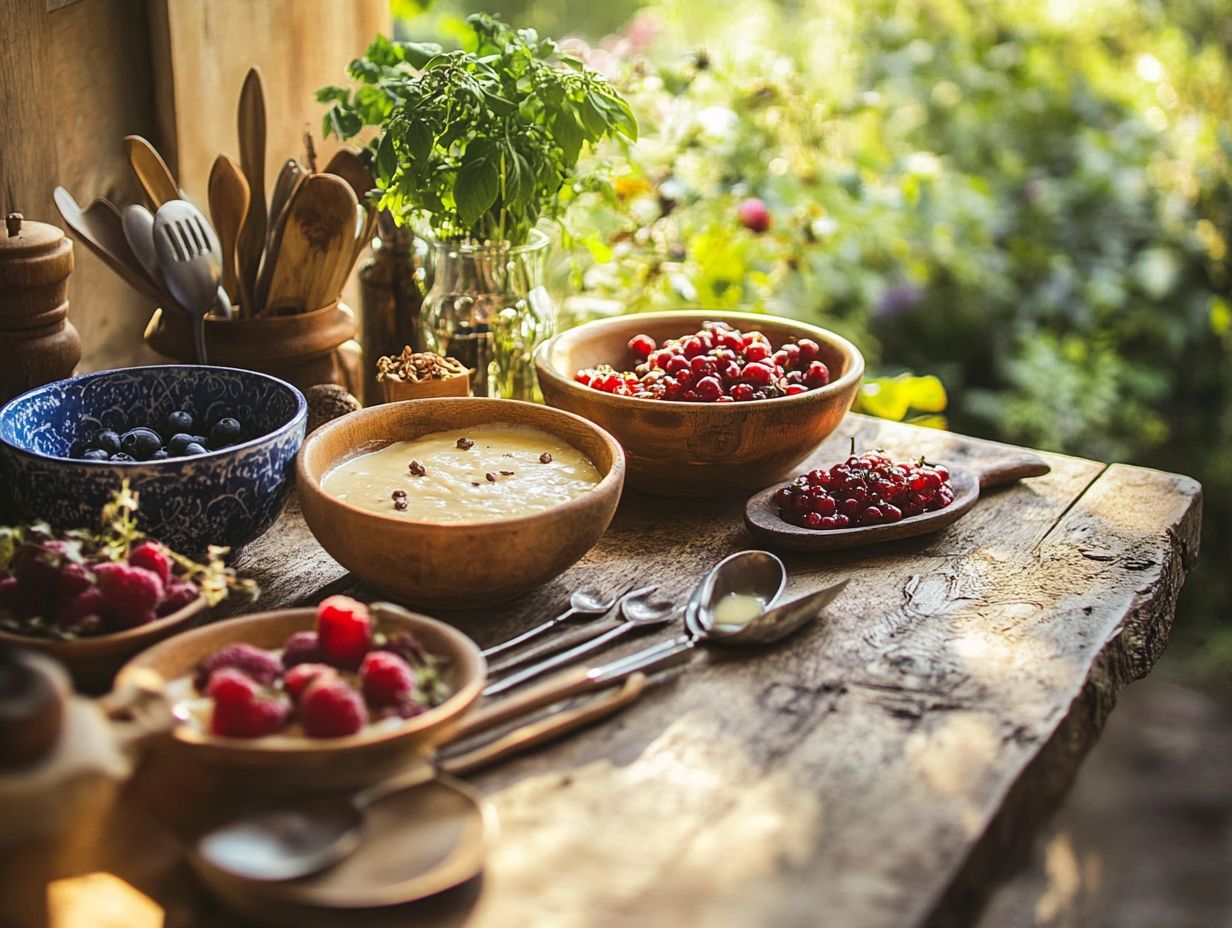
- Incorporating wild edibles into custards and puddings adds unique nutritional value and health benefits to your desserts.
- Identifying and harvesting wild edibles is essential for safe consumption. Follow step-by-step instructions and cooking tips for delicious and safe wild edible desserts.
- The possibilities for creating wild edible custards and puddings are endless, providing a tasty and beneficial twist to traditional desserts. Don’t be afraid to get creative and experiment with different ingredients!
What are Wild Edible Custards and Puddings?
Wild edible custards and puddings combine ingredients foraged from the wild with time-honored dessert-making techniques.
Imagine indulging in these delightful dishes, which often feature a medley of wild berries, nuts, and various herbs, all reflecting the earth’s diverse bounty and the changing seasons. The preparation methods can range from simple boiling and blending to intricate baking and layering, highlighting the creativity that arises when you combine nature’s gifts with ancestral wisdom.
As you savor these preparations, you ll notice how intimately they are woven into cultural traditions, particularly in Native American cuisine, where utilizing local flora takes center stage. The comforting essence of these custards and puddings not only nourishes the body but also fosters a deep sense of belonging, connecting you to your heritage and the land.
With each bite, you experience a taste of culinary history, showcasing the resilience and resourcefulness of communities that have thrived in harmony with nature.
Benefits of Incorporating Wild Edibles
Incorporating wild edibles into your diet unlocks a wealth of health benefits and elevates the nutritional value of your meals, especially in autumn when these ingredients are at their prime.
Wild edibles introduce unique flavors and textures that can elevate traditional recipes, transforming simple dishes into exquisite seasonal delights. This practice champions sustainable eating and fosters a profound connection with nature, encouraging you to develop a deeper appreciation for local ingredients and the beauty of seasonal cuisine.
Nutritional Value and Health Benefits
Wild edibles are often brimming with vitamins, minerals, and antioxidants, making them a delightful addition to any meal, especially in custards and puddings, where they impart unique flavors and health benefits.
Take nettles, for example they re a fantastic source of vitamins A and C, as well as iron and calcium, enhancing the nutritional value of your dishes. Then there are dandelion greens, which offer a powerful dose of vitamin K and boast antioxidant properties that promote overall well-being. By incorporating these greens into your puddings, you not only introduce a subtle earthiness but also enhance the dish with essential nutrients.
Let s not forget about wild berries, like blackberries and blueberries, that flourish in their natural habitats. They are packed with antioxidants that may help combat free radicals, supporting better health. By embracing these wild edibles, you can craft delectable desserts while enjoying the myriad benefits of nature s bounty.
Ready to try your hand at these wild creations? Gather your ingredients and start experimenting with wild edibles in your desserts!
Common Wild Edibles Used in Custards and Puddings
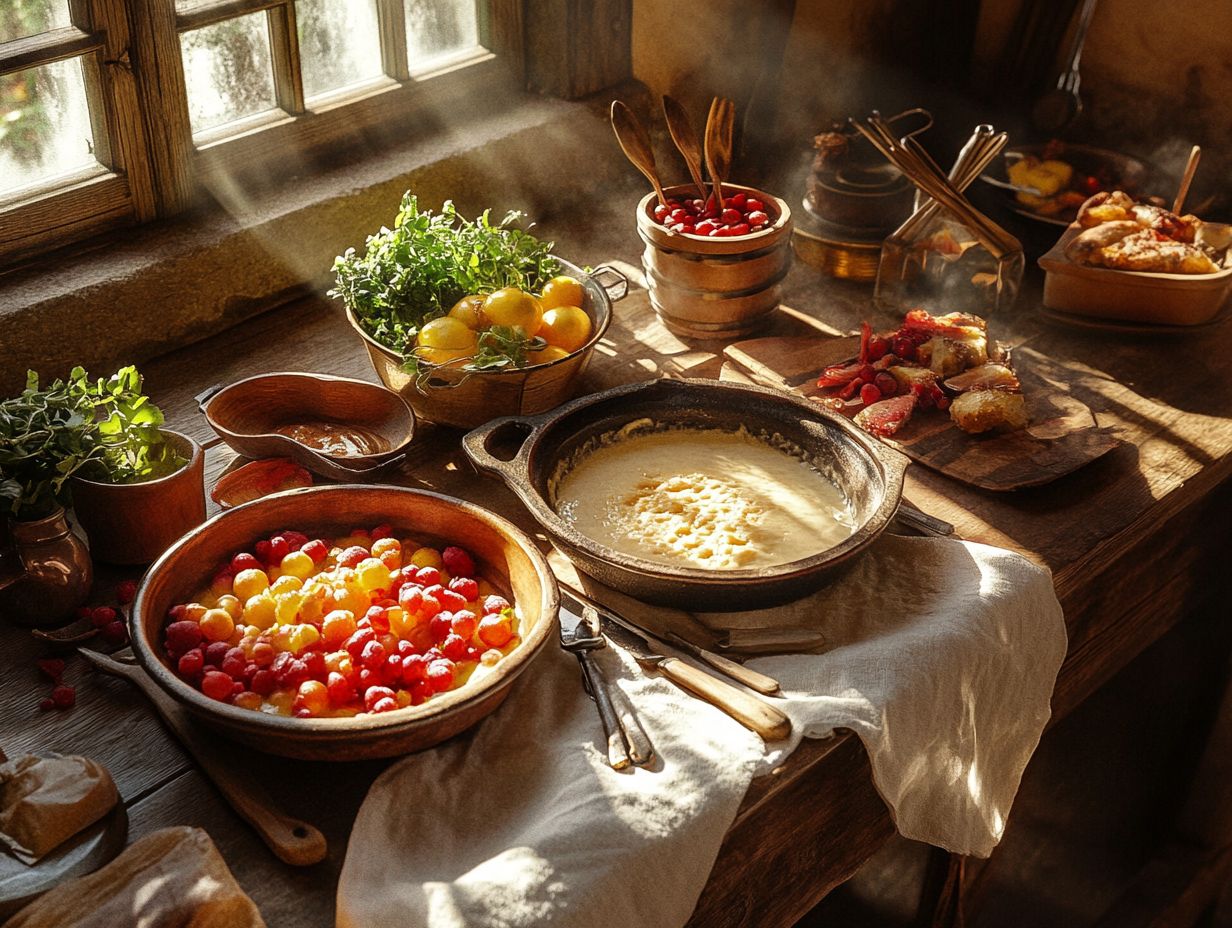
You can artfully incorporate a range of wild edibles into custards and puddings, bringing unique flavors and an organic essence to your traditional desserts.
Ingredients such as wild greens, berries, and herbs have the potential to elevate a classic cornmeal dish into a remarkable cooking experience that celebrates seasonal ingredients.
By exploring these common wild edibles, you not only enrich your palate but also cultivate a deeper connection to your surroundings, fostering a mindful appreciation for local food sources.
Identifying and Harvesting Wild Edibles
Identifying and harvesting wild edibles requires both knowledge and caution, as not all plants are safe to eat. Understanding which ones are edible is essential for you as a forager. Recognizing these plants not only enhances your cooking fun but also deepens your connection to nature.
Learning about local flora focusing on key features for identification and safe harvesting practices is crucial if you re interested in incorporating wild ingredients into your cooking.
To forage effectively, pay attention to distinct characteristics like leaf shape, color, and growth patterns. Be on the lookout for potentially toxic plants that may look similar. For instance, knowing how to tell apart edible wild garlic from lily of the valley is essential for safe harvesting.
Here are some safety tips to keep in mind:
- Forage in unpolluted areas: Always choose places free from pollution for safety.
- Use a reliable field guide: This helps you accurately identify edible plants.
- Seek guidance from experienced foragers: Learning from others enhances your knowledge.
Resources such as local workshops, books, and online forums can offer invaluable insights to help you refine your foraging skills and knowledge.
Recipes for Wild Edible Custards and Puddings
Crafting exquisite wild edible custards and puddings invites you to embrace seasonal ingredients, resulting in unique and flavorful creations. For more inspiration, check out crafting wild edible desserts: a guide that honors the bounty of nature.
Imagine creamy puddings infused with foraged herbs or custards enriched with vibrant wild berries. These recipes provide a delightful opportunity to experiment with wild edibles in your kitchen.
By blending traditional techniques with innovative approaches, these recipes inspire your creativity and deepen your appreciation for local ingredients.
Step-by-Step Instructions
-
Step-by-step instructions are crucial for successfully crafting wild edible custards and puddings. They guide you through each phase of the process, from ingredient preparation to the final serving.
-
Start by selecting your wild edibles think foraged berries, dandelion greens, or wild nuts to build a flavorful foundation. Once you’ve gathered your ingredients, remember that thorough washing and precise chopping techniques are key to preserving both texture and flavor.
-
Next, incorporate these elements into a base of milk, eggs, or plant-based alternatives. Gentle heating on a stovetop using a double boiler (a pot that allows you to cook gently using steam) ensures even temperature distribution, preventing any unwelcome curdling. As the mixture thickens, whisking becomes essential to achieve that desired creamy consistency.
-
Finally, straining the mixture before pouring it into serving dishes guarantees a silky smooth finish perfect for enhancing the sensory experience of your dessert.
Tips for Creating Delicious and Safe Wild Edible Desserts
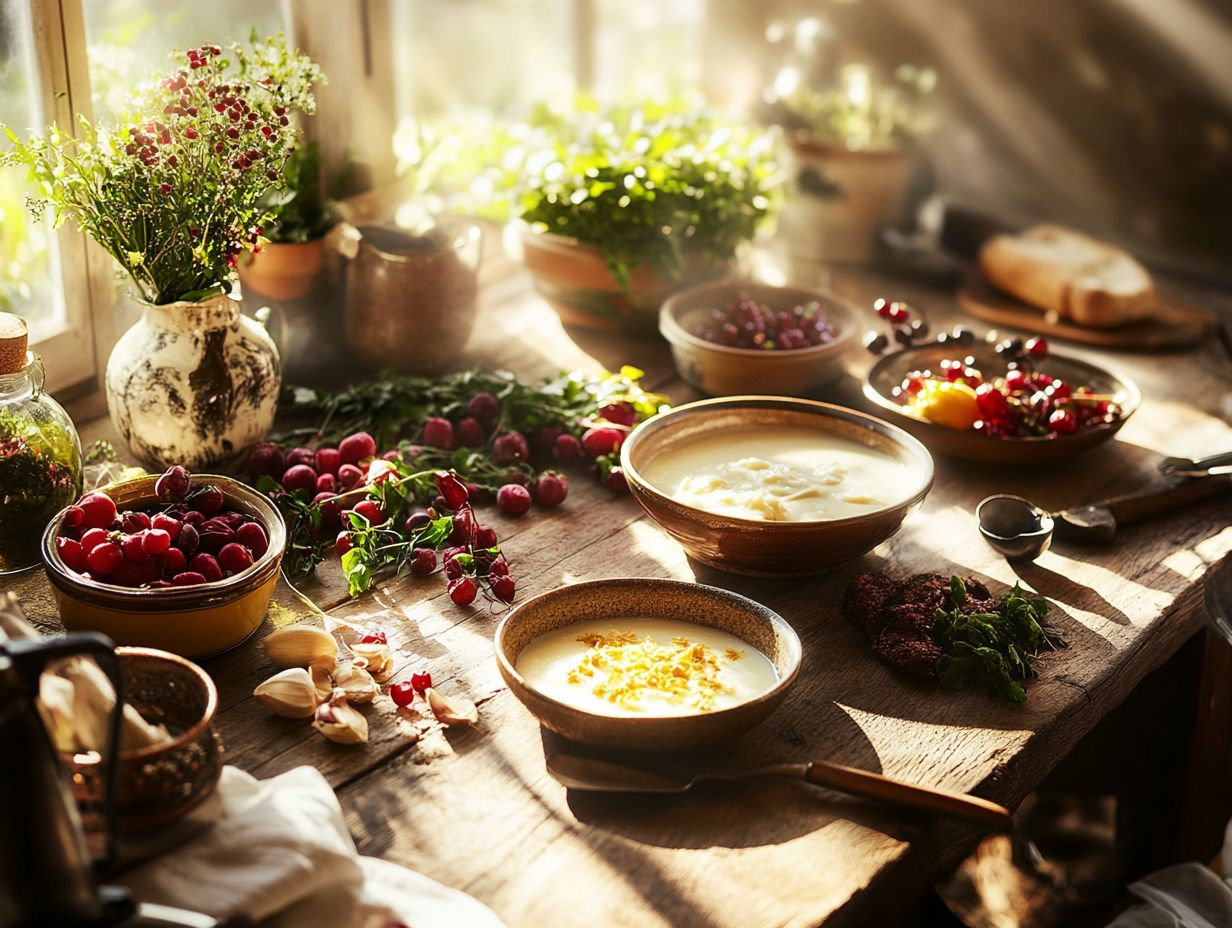
Creating delectable and safe wild edible desserts necessitates a harmonious blend of culinary expertise and a respectful approach to foraging. By grasping the nuances of flavor, texture, and preparation techniques, you can transform foraged ingredients into exquisite dishes that are not only delicious but also safe to enjoy.
Follow specific tips to savor the bountiful gifts of nature in your desserts!
Preparation and Cooking Tips
Preparation and cooking tips for wild edibles are essential for maximizing flavor and ensuring safety when crafting desserts like custards and puddings.
Using fresh, wild ingredients such as dandelion greens or wood sorrel can truly elevate your culinary creations. Before you begin cooking, it s vital to clean these edibles thoroughly to remove any dirt or pests that may linger.
For instance, blanching dandelion greens briefly boiling them can significantly reduce their bitterness, making them a delightful addition to a creamy custard.
When it comes to puddings, pairing wild berries with vanilla or cinnamon creates a wonderful contrast of flavors. A touch of lemon zest can really brighten the overall profile!
Vary your cooking times: delicate greens may only require a quick saut , while heartier roots benefit from longer, slower cooking to unlock their full flavor potential.
Endless Possibilities and Benefits
The world of wild edibles opens up a realm of culinary possibilities, inviting you to explore unique flavors and textures that can elevate your dishes to new heights.
Imagine crafting a vibrant salad, adorned with delicate wildflowers, or layering in foraged greens that add a peppery kick to traditional recipes. Using wild edibles encourages you to experiment, pushing the boundaries of your culinary creations!
These ingredients champion sustainability, fostering a connection to nature and promoting the use of local resources.
From infusing oils with aromatic wild herbs to crafting enticing sauces, the opportunities are truly vast. Start your journey by incorporating local foraged treasures into familiar dishes, igniting your creativity while savoring nature’s bounty.
Frequently Asked Questions
1. What are some wild ingredients that can be used in crafting edible custards and puddings, particularly for seasonal recipes?
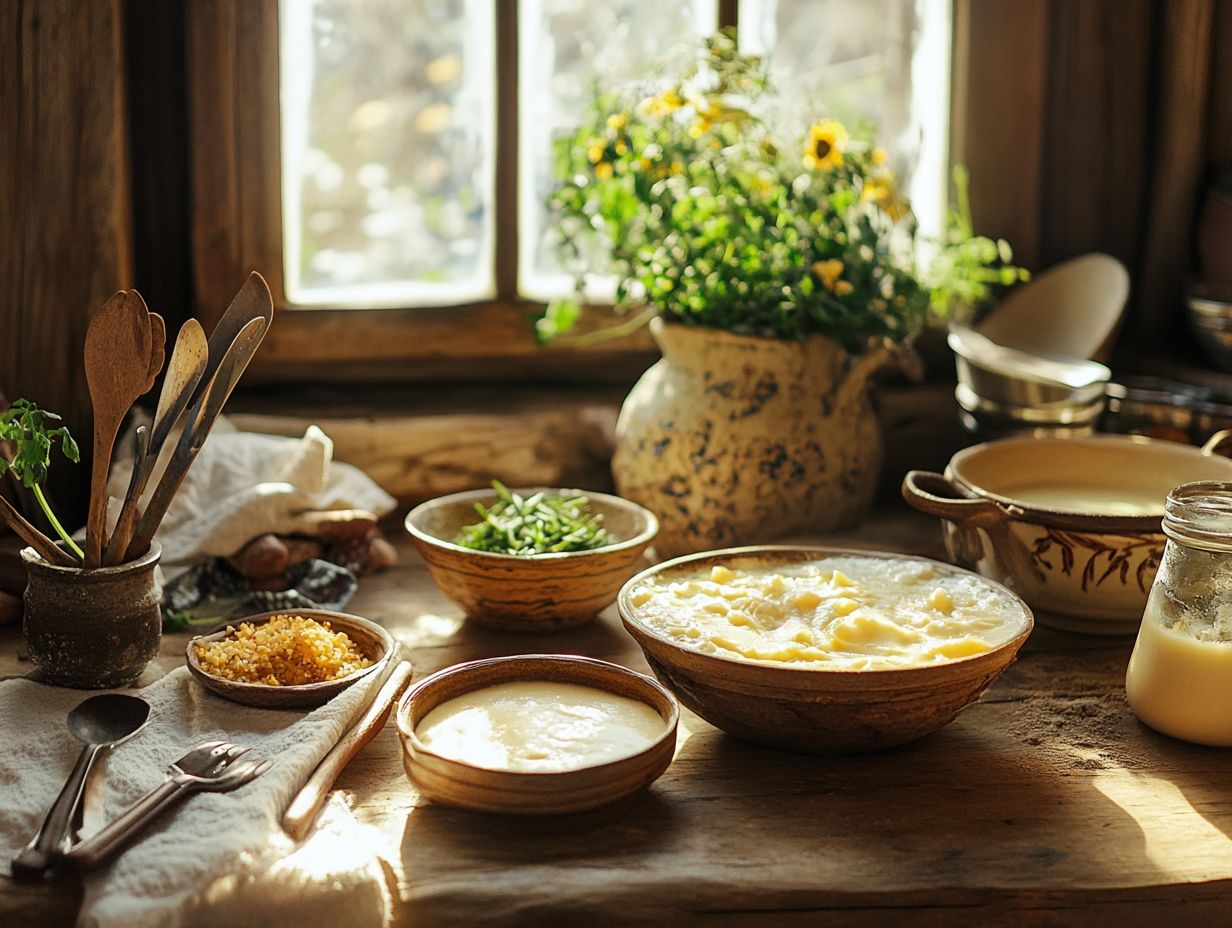
Common wild ingredients used in custards and puddings include nuts, berries, flowers, and roots such as elderflower, blackberries, acorns, and dandelion roots.
2. Are there any safety precautions when using wild ingredients in custards and puddings?
Yes! Properly identify and wash all wild ingredients before use. Consulting with a local expert or guidebook is also recommended to ensure safety and proper handling.
3. How do I incorporate wild ingredients into my custard or pudding recipe?
You can incorporate wild ingredients in various ways, such as using them as toppings, pureeing them into the custard or pudding base, or infusing them into the liquid component of the recipe.
4. Can I substitute wild ingredients for traditional ingredients in custard and pudding recipes?
Yes, wild ingredients can often substitute traditional ones. However, consider the flavor and texture of the wild ingredient and adjust the recipe accordingly.
5. Are there specific tools or equipment needed for crafting wild edible custards and puddings?
No specialized tools are required! Basic kitchen tools work fine, but having a blender or food processor can be helpful for pureeing certain wild ingredients.
6. Are there unique health benefits to using wild ingredients in custards and puddings?
Yes! Wild ingredients often contain higher concentrations of vitamins, minerals, and antioxidants compared to traditional ingredients. They also add a unique range of flavors to your custards and puddings.
Call to Action: We encourage you to try using wild ingredients in your next recipe! Share your experiences and favorite creations with us!

